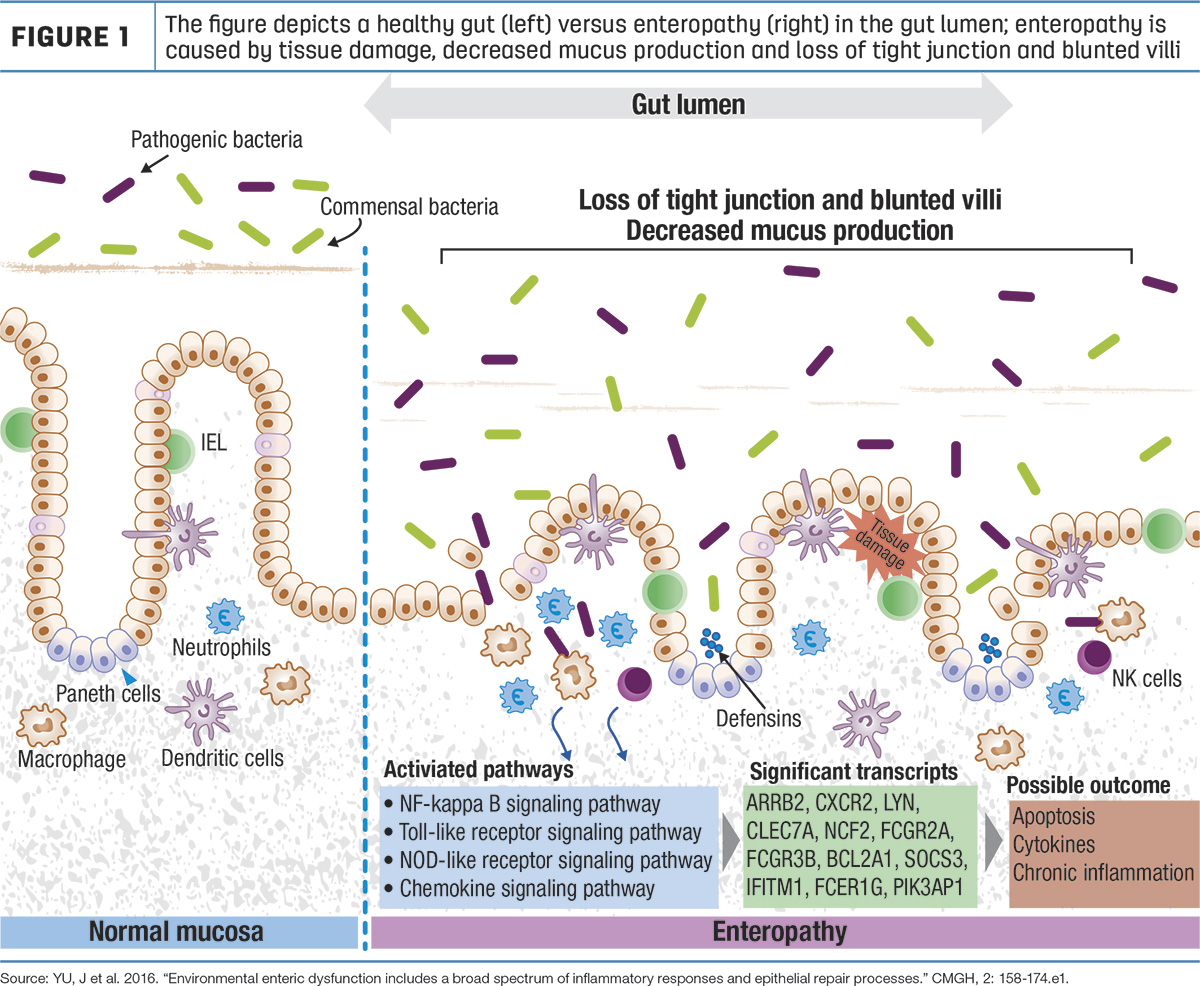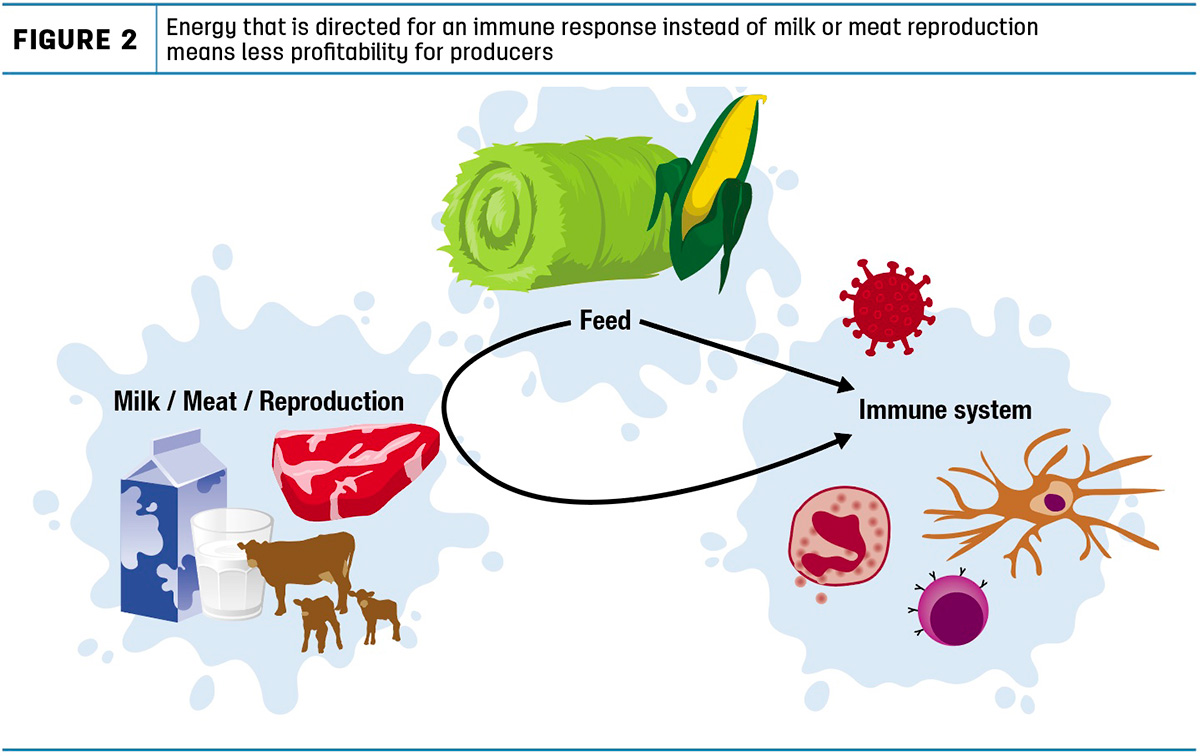Across agriculture, producers face the challenge of suboptimal production in their animals. While not the entire cause of deficiencies in production, “leaky gut” can offer some explanation for suboptimal animal performance.
In the Dairy Calf and Heifer Association webinar, “Intestinal Barrier Dysfunction in Cattle: Causes and Consequences,” Dr. Sara Kvidera, dairy technical consultant at Elanco Animal Health, addressed promoting gastrointestinal (GI) tract health at every stage of a calf’s growth and development while sharing mitigation strategies to prevent systemic inflammation.
The gastrointestinal tract
The GI tract has numerous functions, which include serving as an important barrier and absorbing nutrients. The barrier function prevents parasites, pathogens, enzymes, acids, toxins and other materials from infiltrating the animal. The gut accounts for 30% of all metabolic and protein synthesis in dairy cows and uses 20% of oxygen from the whole animal.
With 75% of the immune system residing in the GI tract, the gut is an important part of the overall immune response.
“The gut is an enormous amount of area to defend that depends upon what we eat and take in on a daily basis,'' Kvidera said. “This is often where the first line of defense occurs if there are dietary or stress problems animals are facing.”

When differentiating between the rumen and the lower gut, there is a big difference between potential exposure to pathogens. The layers in the ruminal epithelium equate to 85 microns (μ), whereas the intestinal epithelium is only one cell layer at 20 μ. The inner and outer layers of mucus in the lower gut are important components to help keep microbes in place without getting too close to the barrier of the GI tract.
In a healthy gut, normal mucosa, well-structured villi and presence of mucus keeps pathogens in the lumen of the intestine. Enteropathy, defined as damage or irritation and swelling to the small intestine, occurs when villi are shortened and the mucus layer is sloughed off, which allows for pathogens to enter the gut.
An important component of the mucosal immune system, IgA is an immunoglobulin produced locally by plasma cells present in the mucosal wall. IgA can bind and neutralize without inducing an immune response. While IgG is one of the most common immunoglobulins mentioned in youngstock research, IgA is produced in greater quantities than all other types of antibodies to neutralize microbial toxins or enzymes in and out of epithelial cells in the gut.
Intestinal dysfunction in ruminants
Gut health impacts ruminants in a variety of ways, starting with rumen acidosis. Low pH levels in the rumen can cause issues in both the rumen and hindgut, with the hindgut at higher risk of bacterial translocation.
“The hindgut might be more susceptible to bacterial impacts since it is thinner and has the dual role of nutrient absorption and barrier function,” Kvidera said.
Another example of intestinal dysfunction is heat stress. When animals become overheated, blood flow is redistributed to the skin in an attempt to dissipate heat. This constricts blood flow to the gut, which creates a hypoxic environment with reduced barrier function.
Feed restriction is a third example of intestinal dysfunction, but the exact mechanism of its impact is unknown. Other potential causes of leaky gut include psychological stress and peripheral inflammation, but these examples are more representative of monogastric animals.

Energy demands of the immune system
“We do not want gut health problems because they activate the immune system,” Kvidera said. “When the immune system is activated, immune cells demand large quantities of energy.”
Infection of the immune system can cause a drain in energy, and glucose is the preferred fuel source to replenish cells. Used as an important metabolic fuel, it is challenging to quantify glucose usage since the immune system resides in all tissues of the body.
Considering most energy from feed goes toward milk production in dairy cattle or tissue accretion in a growing animal, energy directed toward the immune system takes away from dollars that might otherwise go in the pockets of producers.
“An immune response means a negative bottom line for producers,” Kvidera stated. “We want energy to go toward productive purposes and not toward immune activation.”
Mitigation strategies for leaky gut
With rumen acidosis, heat stress and inadequate feed intake as some of the top causes for leaky gut, there are numerous strategies to reduce this problem. Starting with the producer, minimal stress through weaning, shipping, overcrowding and feed changes can go a long way to prevent exposure to infection, in addition to maintaining a clean environment.
On the nutritionist side, using feed ingredients to support gut health and exploring immunomodulatory changes can help mitigate leaky gut. When working together, producers and nutritionists can help prevent rumen acidosis by making dietary changes gradually and collaborating on management strategies related to feed intake and feed additives.
A feed additive, Saccharomyces cerevisiae boulardii (SCB), helps to support lower gut health. In 7-day-old calves, supplementing SCB helped form more IgA in the gut. In another study of veal calves over several weeks, supplementing SCB reduced fecal scores and diarrhea cases.
SCB is able to get through the acidic environment of the abomasum in order to target the hindgut as a probiotic, where it can neutralize toxins and lead to positive gut health outcomes.
Overall, gut health in dairy animals of all ages is important, and systemic inflammation can occur if poor gut health is left untreated. Inflammation in the gut is costly, both to animals and producers, from an energy and economic standpoint. Gut inflammation can steal energy supply from other bodily processes, such as tissue growth or milk production, eventually taking away from a producer’s paycheck.







